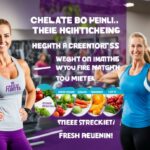Last Updated on 3 months by Francis
Understanding deadlift standards and how to improve your deadlift performance is essential for any fitness enthusiast looking to enhance their strength training journey. Deadlift standards serve as guidelines that help assess your performance and track your progress in the deadlift exercise.
Deadlift weight standards can vary based on factors such as age, gender, body mass, and proficiency level. It’s important to consider training experience, proper nutrition and recovery, and the impact of supportive gear on deadlift performance. By understanding and applying deadlift standards, you can set realistic goals and push yourself to new heights.
Contents
Key Takeaways:
- Deadlift standards are a set of guidelines that help assess performance and track progress in the deadlift exercise.
- Various factors such as age, gender, body mass, and proficiency level can impact an individual’s deadlift standards.
- Deadlift standards can be categorized into levels such as beginner, novice, intermediate, advanced, and elite, with corresponding weight ranges for males and females.
- Training experience, proper nutrition and recovery, and supportive gear can also affect deadlift performance.
- Understanding deadlift standards and implementing them in your training can help you set realistic goals and optimize your strength training journey.
Deadlift Standards for Different Levels

When it comes to deadlift standards, several factors come into play, including gender, age, body weight, and experience level. These standards act as guidelines to help individuals assess their performance and track their progress in the strength-training exercise of deadlifting.
For beginners, deadlift standards typically range from 1 to 1.25 times their body weight for males and 0.75 to 1 times their body weight for females. As individuals progress to the novice level, deadlift standards increase to 1.5 to 1.75 times their body weight for males and 1.25 to 1.5 times their body weight for females.
Intermediate lifters have higher deadlift standards, aiming for 2 to 2.5 times their body weight for males and 1.75 to 2 times their body weight for females. Advanced lifters push the boundaries further, with deadlift standards ranging from 2.5 to 3 times body weight for males and 2 to 2.5 times their body weight for females.
For elite lifters, those who participate in national or international strength sports competitions, deadlift standards are even higher. Elite male lifters can deadlift over 3 times their body weight, while elite female lifters can deadlift over 2.5 times their body weight.
Deadlift standards provide a framework for measuring progress and setting new goals. They serve as a helpful tool during weightlifting training, allowing individuals to gauge their performance against established benchmarks.
It is important to note that these deadlift standards are general guidelines. Individual capabilities may vary based on factors such as genetics, body composition, and training history. Nonetheless, they provide a valuable reference point for weightlifters of all levels to strive towards and achieve their personal best.
Remember, deadlifts should always be performed with proper form, technique, and safety precautions to minimize the risk of injury and maximize the benefits of this challenging exercise.
How Much Can the Average Man and Woman Deadlift?

When it comes to deadlifts, the average weight lifted by men and women can vary based on several factors such as age, body weight, and training experience. Let’s take a closer look at the average deadlift weights for both genders.
For men with an average body weight of about 180-200 lbs, the average beginner deadlift weight ranges from 180-250 lbs. As men progress to the novice level, the average deadlift weight increases to around 270-350 lbs. It’s important to note that individual capabilities may vary within these ranges.
For women with an average body weight of about 130-150 lbs, the average beginner deadlift weight is around 97-150 lbs. As women advance to the novice level, the average deadlift weight typically ranges from 163-225 lbs. Again, individual capabilities may vary.
Remember, these are rough estimates and should serve as a general reference point. Various factors such as body composition, muscle distribution, and training history can impact an individual’s deadlift performance. It’s crucial to focus on personal progression and avoid comparing yourself to others.
For a more comprehensive understanding, below is a table showcasing the average deadlift weights for both men and women at different levels:
| Level | Male Deadlift (lbs) | Female Deadlift (lbs) |
|---|---|---|
| Beginner | 180-250 | 97-150 |
| Novice | 270-350 | 163-225 |
| Intermediate | ||
| Advanced | ||
| Elite |
Note: The table above represents general weight ranges, and individual capabilities may vary within each level. The intermediate, advanced, and elite categories will be discussed further in later sections.
Keep in mind
It’s important to remember that these numbers are not set in stone. Your own deadlift capabilities may differ from the averages based on various factors. Focus on your personal progress, maintain proper form, and gradually increase the weight as you gain strength and confidence.
How Much Should I Be Able to Deadlift by Age?
Deadlift capabilities can vary with age due to changes in muscle mass, bone density, and hormone levels. Younger individuals, such as teens and young adults, have greater growth hormones and faster healing rates, allowing them to gain strength quickly. Individuals in their 30s and 40s typically see a peak in their strength capabilities, with steady muscle mass, bone density, and hormone levels. Individuals in their 50s, 60s, and beyond may experience a decline in muscle mass and hormone levels, but consistent strength and mobility exercises can help minimize age-related decreases and maintain physical health.
When it comes to deadlift capabilities by age, it is important to consider age-related physical capabilities. Deadlift capabilities can be categorized into beginner, novice, intermediate, and advanced levels, with corresponding weight ranges.
Deadlift Capabilities by Age:
| Age Group | Beginner Level | Novice Level | Intermediate Level | Advanced Level |
|---|---|---|---|---|
| Teens | Body weight to 0.75 times body weight | 0.75 to 1 times body weight | 1 to 1.5 times body weight | 1.5 times body weight or more |
| 20s | Body weight to 1 times body weight | 1 to 1.5 times body weight | 1.5 to 2 times body weight | 2 times body weight or more |
| 30s | Body weight to 1 times body weight | 1 to 1.5 times body weight | 1.5 to 2 times body weight | 2 times body weight or more |
| 40s | Body weight to 1 times body weight | 1 to 1.5 times body weight | 1.5 to 2 times body weight | 2 times body weight or more |
| 50s and beyond | Body weight to 0.75 times body weight | 0.75 to 1 times body weight | 1 to 1.5 times body weight | 1.5 times body weight or more |
These weight ranges serve as a general guideline, but it is important to listen to your body and work within your own capabilities. It is also recommended to consult with a qualified fitness professional or strength coach to ensure proper form and technique to prevent injury.
Remember, age should never be a limiting factor, and strength training can be beneficial at any age. With dedication and consistent effort, individuals of all ages can achieve their deadlift goals and maintain a healthy and active lifestyle.
Key Ways to Improve Deadlift Results
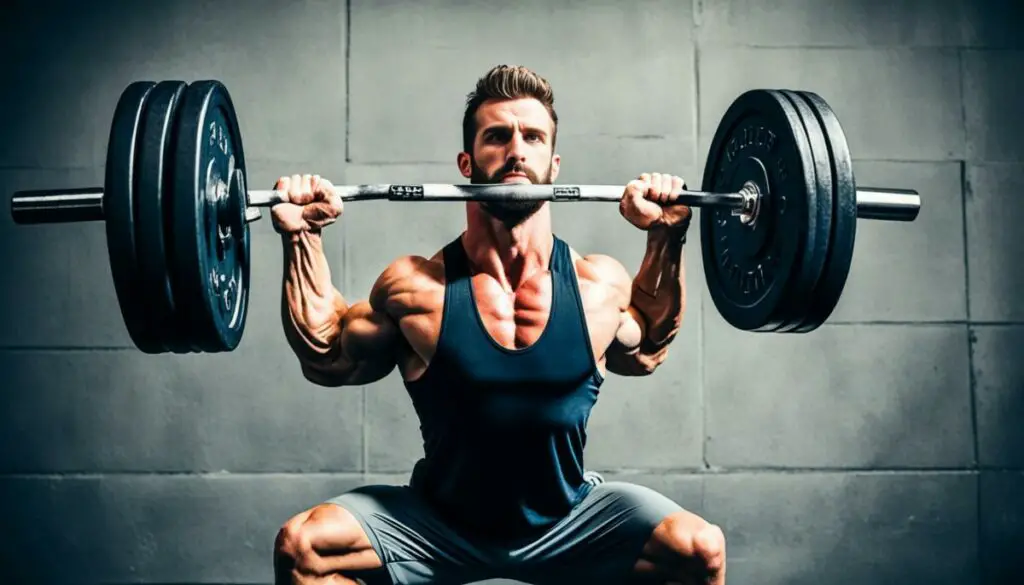
Improving your deadlift performance requires a combination of technique, training, and overall physical preparedness. By incorporating the following key strategies, you can enhance your deadlift results and progress towards your strength training goals.
1. Master Proper Technique
Mastering proper deadlift technique is essential for optimizing performance and reducing the risk of injury. Focus on maintaining a neutral spine position throughout the lift, engaging your core muscles, and keeping the barbell close to your body. Proper technique not only ensures safety but also allows for maximum force production and efficiency during the lift.
2. Maintain a Consistent Training Regimen
Consistency is key when it comes to improving your deadlift. Establish a training routine that includes regular deadlift sessions, allowing for progressive overload over time. Gradually increase the weight or intensity of your deadlifts to challenge your muscles and promote strength gains. Remember to prioritize quality over quantity and give your body sufficient time to recover between training sessions.
3. Incorporate Targeted Accessory Exercises
Adding specific accessory exercises to your training regimen can help target and strengthen the muscles involved in the deadlift. Incorporate exercises such as Romanian deadlifts, rack pulls, deficit deadlifts, and other posterior chain exercises to improve your deadlift performance. These exercises can address weaknesses, promote muscle balance, and enhance overall strength in the key areas needed for a successful deadlift.
4. Prioritize Nutrition and Recovery
Proper nutrition and adequate recovery are crucial for optimizing your deadlift results. Fuel your body with a well-balanced diet that includes sufficient protein, carbohydrates, and healthy fats to support muscle growth and repair. Additionally, prioritize rest and recovery to allow your body to adapt and rebuild after intense training sessions. Incorporate strategies such as adequate sleep, foam rolling, and stretching to aid in recovery and prevent overuse injuries.
5. Improve Grip Strength
A strong grip is essential for lifting heavier weights during deadlifts. Incorporate exercises that specifically target grip strength, such as farmer’s walks and dead hangs. These exercises not only improve your ability to hold onto the barbell but also enhance overall forearm and hand strength. A stronger grip translates to better stability and control during the deadlift movement.
By focusing on these key ways to improve deadlift results, you can enhance your technique, increase your strength, and make significant progress in your deadlift training. Remember to prioritize safety, listen to your body, and stay consistent in your training efforts.
The Benefits of the Deadlift
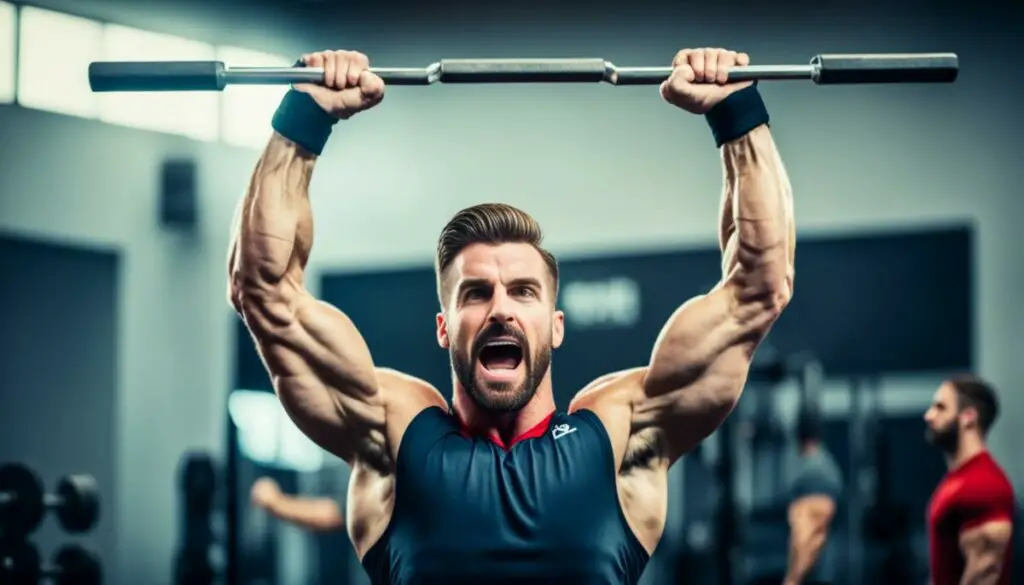
The deadlift is a highly effective exercise that offers numerous benefits for individuals seeking full-body development and functional fitness. By engaging multiple muscle groups simultaneously, the deadlift provides a comprehensive workout that targets the arms, shoulders, back, core, and legs.
One of the key advantages of the deadlift is its ability to build overall strength. By lifting heavy weights off the ground, individuals can develop strong muscles and improve their power and force production. This exercise is particularly effective for developing functional fitness, as it mimics real-life movements such as picking up objects.
A study conducted by the Journal of Strength and Conditioning Research found that deadlift training can lead to improvements in running speed and jumping ability. This makes it a valuable exercise for athletes and individuals looking to enhance their athletic performance.
The deadlift also specifically targets the posterior chain, which refers to the glutes, hamstrings, and lower back. Strengthening these muscle groups is crucial for overall stability, as well as reducing the risk of injuries, particularly in activities that involve bending and lifting.
The Benefits of the Deadlift:
- Engages multiple muscle groups for a full-body workout
- Builds overall strength and power
- Improves functional fitness and athletic performance
- Targets the posterior chain for better stability and injury prevention
By incorporating the deadlift into your fitness routine, you can reap these benefits and achieve your strength and fitness goals. Remember to focus on proper form and gradually increase the weight as you become more proficient.
Proper Deadlift Form and Safety Tips
Proper deadlift form is crucial for maximizing performance and preventing injuries. By following these essential tips, you can ensure you are executing the deadlift exercise with correct technique and safety precautions.
1. Form and Execution
Proper deadlift form involves several key elements:
- Bend your knees and maintain a stable, wide stance.
- Keep your back flat and spine neutral throughout the lift.
- Engage your core and glutes to stabilize your body.
- Hold the barbell close to your body throughout the movement.
- Focus on driving through your heels and maintaining balance.
2. Safety Precautions
“Safety should always be a priority when deadlifting. Implement the following precautions to minimize the risk of injuries.”
- Ensure the barbell is positioned correctly at the start of the lift.
- Wear proper footwear with a stable sole for enhanced balance and support.
- Avoid excessive forward reach, which can strain your lower back.
- Maintain a firm grip on the bar and avoid overstraining your wrists.
- Focus on controlled breathing throughout the lift to stabilize your core.
It’s important to note that safety and proper form go hand in hand. By prioritizing technique and implementing safety precautions, you can confidently perform deadlifts and reap the benefits without risking injury.
| Deadlift Form Points | Safety Precautions |
|---|---|
| Bend knees and maintain a wide stance | Ensure barbell is positioned correctly |
| Keep back flat and spine neutral | Wear proper footwear for stability |
| Engage core and glutes | Avoid excessive forward reach |
| Hold barbell close to body | Maintain a firm grip and wrist position |
| Drive through heels and maintain balance | Focus on controlled breathing |
Different Types of Deadlifts
For individuals looking to add variety to their deadlift routine or target specific muscle groups, there are several deadlift variations to consider. Each variation offers unique challenges and benefits, allowing individuals to customize their workouts based on their goals and preferences.
Sumo Deadlift
The sumo deadlift is a variation where the lifter takes on a wider stance, with the feet positioned outside the grip. This variation places more emphasis on the glutes and inner thighs, making it an excellent choice for individuals looking to target these muscle groups. The wider stance also allows for a more upright posture, which can be beneficial for individuals with mobility or flexibility limitations.
Single-Legged Kettlebell Deadlift
The single-legged kettlebell deadlift is a unilateral variation that adds an element of instability to the exercise. By performing the deadlift with one leg, individuals engage the stabilizer muscles in the core and lower body, improving balance and coordination. This variation is particularly useful for strengthening the hamstrings, glutes, and core while enhancing functional strength for activities that require single-leg stability.
Romanian Deadlift
The Romanian deadlift, also known as the RDL, is a variation that focuses on isolating the hamstrings and posterior chain while reducing stress on the glutes. In this variation, the lifter maintains a slight bend in the knees and hinges at the hips, allowing for a deeper stretch in the hamstrings. The Romanian deadlift is an effective exercise for targeting the hamstrings and developing lower body strength and stability.
By incorporating these deadlift variations into your training program, you can add variety, target specific muscle groups, and continue challenging your body to achieve your fitness goals.
Conclusion
The deadlift is a versatile exercise that offers numerous benefits for individuals looking to improve their strength, functional fitness, and muscle development. By understanding deadlift standards, proper form, and incorporating variations, individuals can optimize their deadlift performance and achieve their strength training goals. It is crucial to prioritize safety, proper technique, and progressive overload to see continued progress and prevent injuries.
With the right guidance and consistent training, anyone can master the deadlift and experience the benefits it has to offer. Whether you are a beginner or an advanced lifter, the deadlift can be tailored to your capabilities and integrated into your training routine. Remember to start with lighter weights and gradually increase the load as you gain confidence and strength.
Embrace the challenge of the deadlift and watch your overall strength and fitness levels soar. As with any exercise, consistency and dedication are key. Keep pushing yourself, seek professional guidance if needed, and enjoy the journey of improving your deadlift performance. Make the deadlift a staple in your fitness routine and witness the transformation in your strength and physical abilities.
FAQ
What are deadlift standards?
Deadlift standards are guidelines that help assess performance and track progress in the deadlift exercise. They are categorized into levels based on factors such as gender, age, body weight, and experience.
How are deadlift standards categorized for different levels?
Deadlift standards are categorized into beginner, novice, intermediate, advanced, and elite levels, with corresponding weight ranges for males and females.
What is the average deadlift weight for males and females?
The average deadlift weight varies based on factors such as age, body weight, and training experience. For males with an average body weight of about 180-200 lbs, the average beginner deadlift weight is around 180-250 lbs, and for females with an average body weight of about 130-150 lbs, the average beginner deadlift weight is around 97-150 lbs.
How does age impact deadlift capabilities?
Deadlift capabilities can vary with age due to changes in muscle mass, bone density, and hormone levels. Younger individuals typically have greater growth hormones and faster healing rates, while those in their 30s and 40s often experience a peak in strength capabilities. Individuals in their 50s, 60s, and beyond may see a decline in muscle mass and hormone levels.
What are key ways to improve deadlift results?
Key ways to improve deadlift results include mastering proper technique, maintaining a consistent training regimen, incorporating targeted accessory exercises, and prioritizing adequate nutrition and recovery.
What are the benefits of the deadlift?
The deadlift offers numerous benefits, including improved overall strength, functional fitness, and muscle development. It engages multiple muscle groups and mimics real-life movements, helping to prevent injuries in daily activities.
What is proper deadlift form and what are some safety tips?
Proper deadlift form involves bending the knees, maintaining a flat back, and lifting the loaded barbell off the ground. Safety tips include ensuring correct bar placement, wearing proper footwear, and avoiding excessive forward reach.
What are some different types of deadlifts?
Some different types of deadlifts include the sumo deadlift, single-legged kettlebell deadlift, and Romanian deadlift. Each variation targets different muscle groups and provides unique challenges.
How can the deadlift be incorporated into a training program?
The deadlift can be incorporated into a training program based on individual goals and muscle group focus. It is important to prioritize safety, proper technique, and progressive overload when including deadlifts in a program.

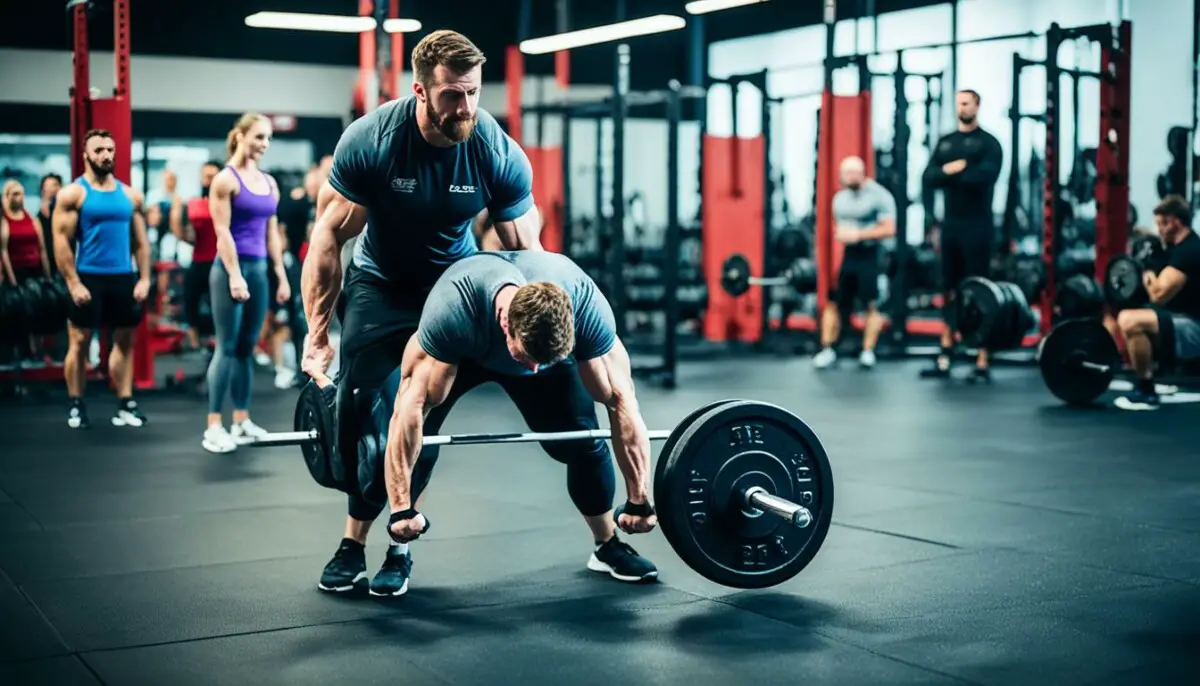
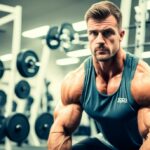
.jpg)
